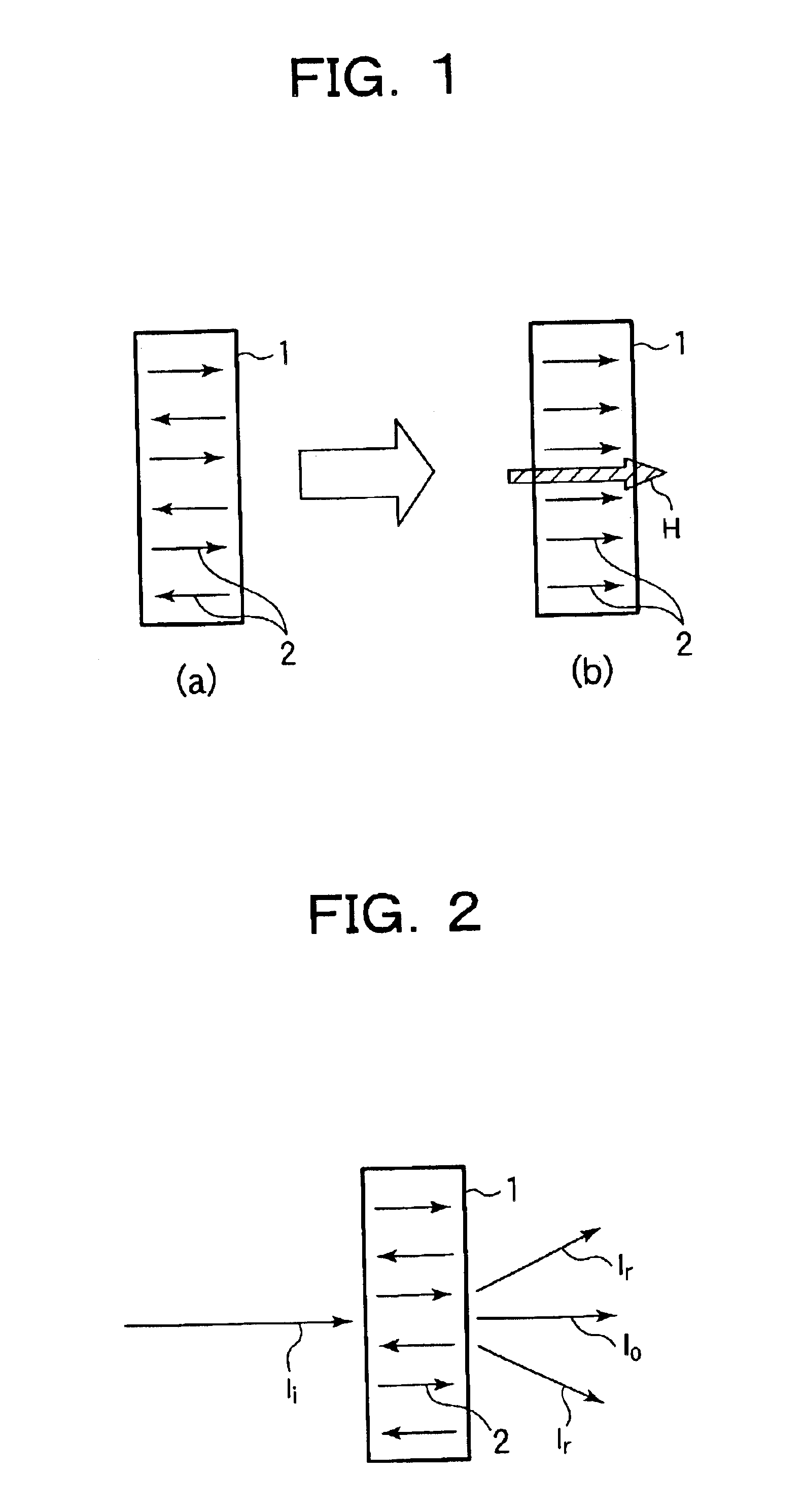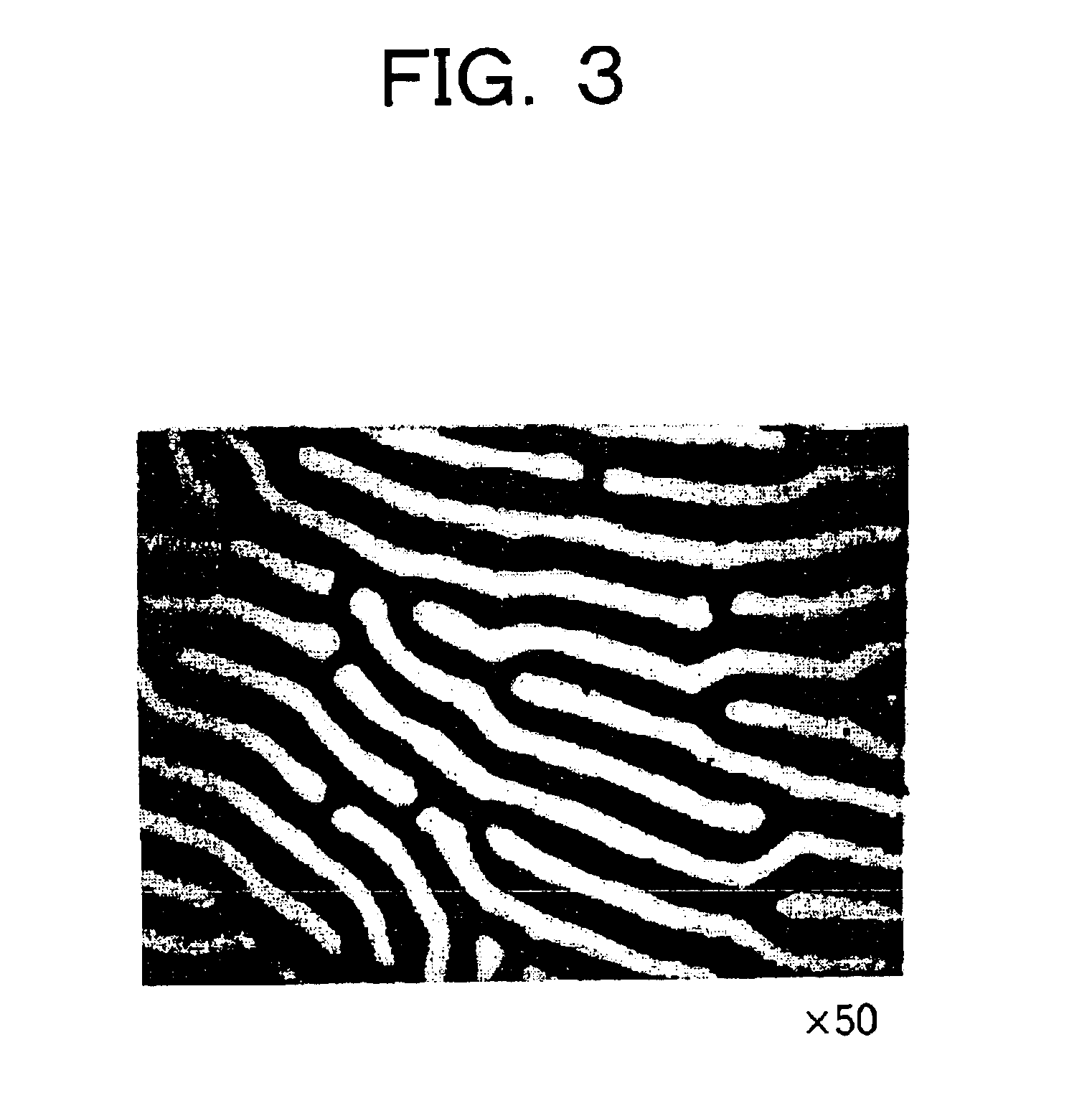Faraday rotator and optical device comprising the same, and antireflection film and optical device comprising the same
- Summary
- Abstract
- Description
- Claims
- Application Information
AI Technical Summary
Benefits of technology
Problems solved by technology
Method used
Image
Examples
second embodiment
ew showing the outline of the Faraday rotator of the invention and an optical attenuator that comprises the rotator;
[0070]FIG. 16 is a view showing the condition of the antireflection film of the third embodiment of the invention, which is formed on both of the light-input / light-output surfaces of a magnetic garnet single-crystal substrate 31;
[0071]FIG. 17 is a view showing the condition of the antireflection film of Example 3-1 of the third embodiment of the invention, which is formed on both of the light-input / light-output surfaces of a magnetic garnet single-crystal substrate 31;
[0072]FIG. 18 is a graph showing the characteristics of the antireflection film of Example 3-1 of the third embodiment of the invention;
[0073]FIG. 19 is a graph showing the characteristics of the antireflection film of Example 3-2 of the third embodiment of the invention;
[0074]FIG. 20 is a graph showing the characteristics of the antireflection film of Example 3-3 of the third embodiment of the invention;...
example 1-1
[0097]A magnetic garnet single-crystal film having a composition of Bi1.2Gd1.2Yb0.5Pb0.05Fe4.15Ga0.8Pt0.01Ge0.04O12 was grown in a mode of liquid-phase epitaxial growth, and worked into a magnetic garnet single-crystal plate. With varying its intensity, an external magnetic field H was applied to the thus-fabricated single-crystal plate substrate in the direction perpendicular to the substrate surface, and the Faraday rotation angle of the plate substrate was measured. The uppermost limit of the magnetic field H that did no more increase the Faraday rotation angle of the sample tested herein even though the intensity of the magnetic field H applied thereto was further increased is the saturation magnetic field Hs of the sample. To that effect, the intensity |Hs| of the saturation magnetic field Hs of this sample was measured at room temperature, and |Hs|=110 Oe.
[0098]The single-crystal substrate was heat-treated at 1100° C. for 30 hours, and its saturation magnetic field Hs was meas...
example 2-1
[0133]A magnetic garnet single-crystal film having a composition of Bi1.2Gd1.2Yb0.5Pb0.05Fe4.15Ga0.8Pt0.01Ge0.04O12 was grown in a mode of liquid-phase epitaxial growth, and worked into a magnetic garnet single-crystal plate. An external magnetic field H was applied to the thus-fabricated single-crystal plate substrate in the direction perpendicular to the single-crystal substrate surface, and the Faraday rotation angle F of the plate substrate was measured. The saturation magnetic field Hs of the sample was measured at room temperature, and it was 110 Oe. The saturation rotation angle Fs of the sample was measured with the saturation magnetic field Hs thereof being applied thereto, and it was 30 degrees. An external magnetic field H, 0.9 times the saturation magnetic field Hs, of 99 Oe was applied thereto, and the Faraday rotation angle F of the sample was measured, and was 28.2 degrees. The ratio of Faraday rotation angle F / saturation rotation angle Fs of the sample was 0.94.
[0134...
PUM
 Login to View More
Login to View More Abstract
Description
Claims
Application Information
 Login to View More
Login to View More - R&D
- Intellectual Property
- Life Sciences
- Materials
- Tech Scout
- Unparalleled Data Quality
- Higher Quality Content
- 60% Fewer Hallucinations
Browse by: Latest US Patents, China's latest patents, Technical Efficacy Thesaurus, Application Domain, Technology Topic, Popular Technical Reports.
© 2025 PatSnap. All rights reserved.Legal|Privacy policy|Modern Slavery Act Transparency Statement|Sitemap|About US| Contact US: help@patsnap.com



